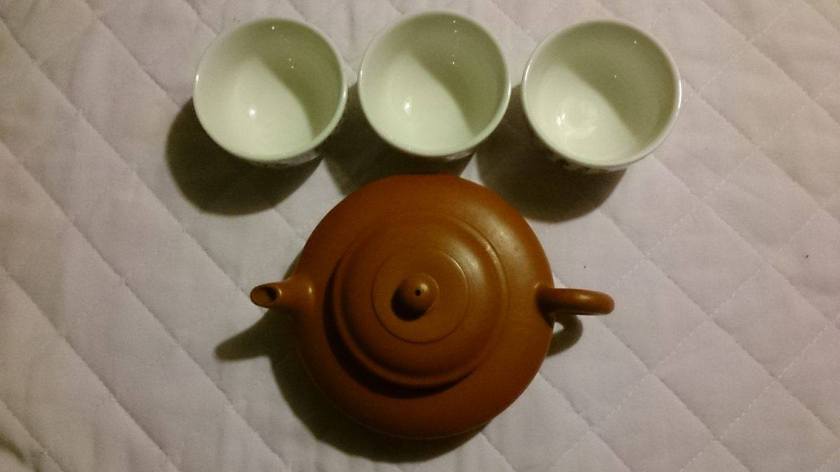When brewing teas, and particularly when brewing teas in multiple steepings, we come up against how many times the same leaves can be brewed otherwise known as tea patience.
For most of the article, I am going to talk about brewing parameters and patience in tea in terms of gong fu style brewing: a small teapot or gaiwan, a large quantity of leaf (maybe about a quarter or a third of the brewing vessel full), and short repeated steepings of 5-30 seconds or so each, probably including a rinse at the beginning.

Tea patience is affected by the nature of the tea itself, as well as how you brew it.
A light oolong may yield many cups if it is brewed for say 5 seconds or so per steeping. (Brewed in a mug with each steeping time taking 2 or 3 minutes of slow drinking may not be the same.) The taste should still be full and fragrant.
Chessers’ black teas benefit from long steepings. I think my farmer must have brewed it for over a minute at a time, in a small glass jug, using enough leaf to fill the whole jug, and used boiling water. These long steepings however, although showing the tea to its best, do not produce such a high quantity of cups. I think we had 4 or 5 cups or so.
This is to say a few things:
- the quantity of tea liqueur that can be yielded from a tea is not necessarily indicative of its quality, it can be the nature of the tea itself.
- the amount of leaf, water temperature and brewing time will all affect the taste of tea.
- teas will taste better when the above variables are in a good proportion, however at the same time, enjoyment is more important than trying too hard to brew too exactly. Having said that, brewing very exactly can be fun, some people even find it sort of ritualistic.
One of the aims of gong fu style tea, or gong fu cha is to make all the leaves open at the same rate. Pouring in the water at the edges of the pot so that the leaves stir around will help to achieve this.
Brewing gong fu style however, is very different to brewing in a mug, produces a different flavour profile, and is useful for seeing a tea’s flavours evolve. It takes practice to become better at this way of tea brewing, but it’s fun. Brewing in a mug will give you all of the flavour of the tea at once, or more immediately, and takes less skill, although it does present its own challenges. For instance, in gong fu style, you often see people pouring over more hot water on the teapot, to maintain a high temperature and develop patina on the pot. However, I have found that brewing in a mug does not require much attention to keeping the mug hot, as the high sides of the mug will retain heat exceptionally well, sometimes too well.
